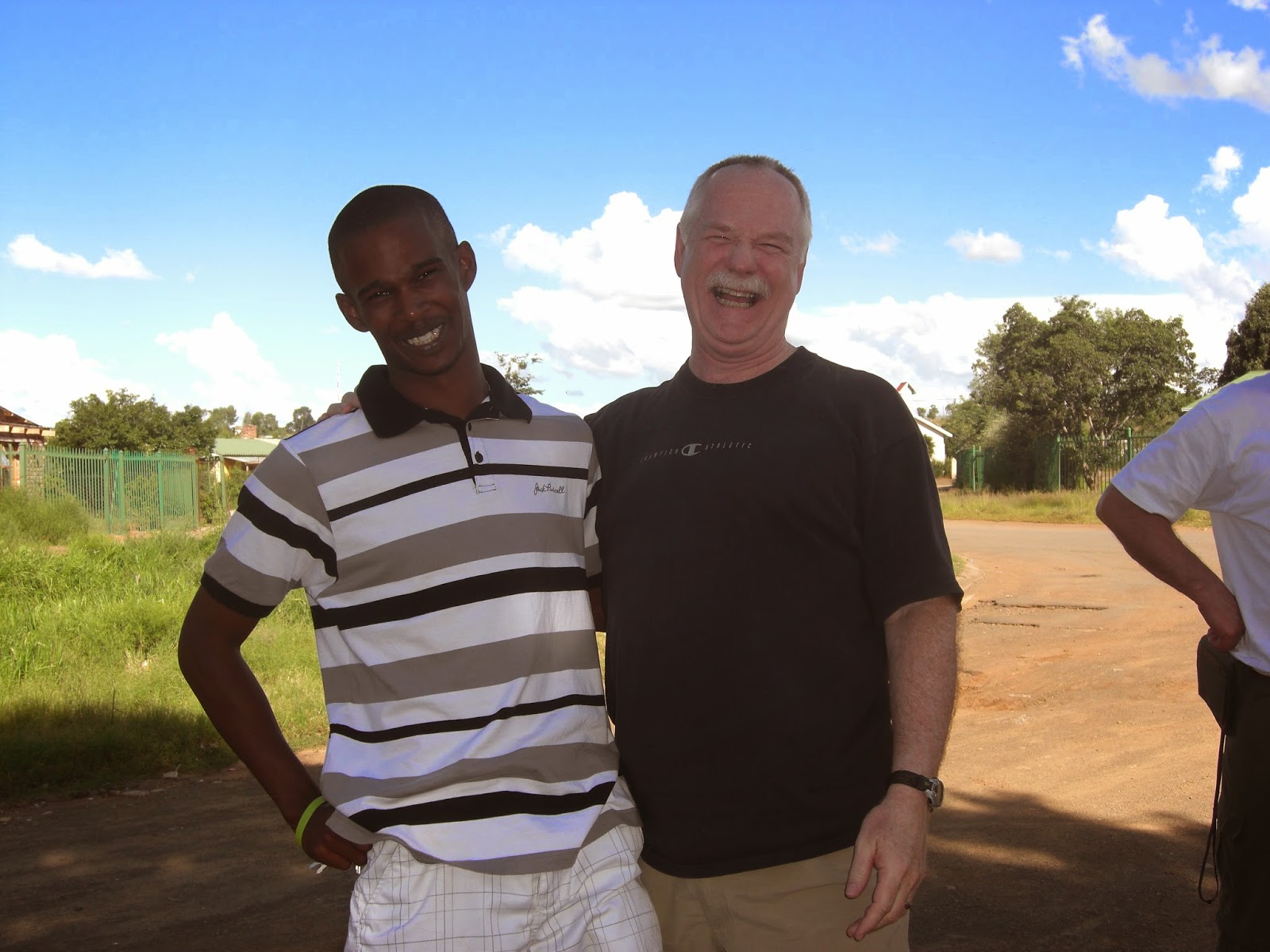On the train, we had difficulty explaining to the conductor where we had recently embarked. There were two very different places with similar sounding names, and neither of us could pronounce the correct place in Norwegian. However, a passenger across the aisle rescued us. Ronja Sophia, a college aged musician who played the bassoon and studied in Rochester, New York, was visiting family in Norway. She was Norwegian and spoke English as well. Upon resolving the destination question, we enjoyed a wonderful conversation with her about many things which I don't remember specifically, but the last thing we shared was a farewell. There was no exchange of names, phone numbers, or promises to be in touch back in the states; we simply went our separate ways in the massive Oslo train station.
Oslo, Norway
 The decision to travel down to Oslo without Larry's parents and meet up with them in a couple weeks in Copenhagen for our return flight was the typical spontaneous approach to life that we enjoyed. Thus, Oslo was a completely new, unfamiliar place, and we had no particular place to go. We had two days to explore the city near the hotel where we stayed. After reprimanding us for not speaking a second language, a Jewish guest at the hotel told us about the Vigeland Park Museum and encouraged us to visit.
The decision to travel down to Oslo without Larry's parents and meet up with them in a couple weeks in Copenhagen for our return flight was the typical spontaneous approach to life that we enjoyed. Thus, Oslo was a completely new, unfamiliar place, and we had no particular place to go. We had two days to explore the city near the hotel where we stayed. After reprimanding us for not speaking a second language, a Jewish guest at the hotel told us about the Vigeland Park Museum and encouraged us to visit. The massive granite sculptures populating the park grounds struck me speechless. Only in the act of viewing them could I comprehend the passion that moved the artist to create these monuments to human relationships. My response was internal and personal. No words can express their meanings like the simple act of viewing them can; the emotional impact is palatable, even when I see the sculptures in photographic images decades later.
In the evening, we strolled down to the wharf. A Viking ship replica that had been built in Minnesota, USA was tied up at the dock. Hjemkonst had just arrived in Olso after sailing from the United States. The American flag was noticeable, flying from the stern of the vessel. Although I worked for Exxon Shipping and spent half my life transporting crude oil from Valedez, Alaska to west coast refineries in the US, I had no desire to traverse the globe in an open vessel as the Vikings had. However, the endeavor proved the point that the Vikings had been plying the waters of the Atlantic Ocean centuries prior to Columbus.
The crowd had dispersed by the time we walked by and the gloaming moved us to continue our stroll down the sidewalk. We waited on the curb of the street for the light to indicate it was safe to cross and who was walking from the opposite direction but Ronja Sophia, our translator on the train from Hallingdahl! She carried her bassoon case. Larry hailed her; we greeted one another, she explained that she had been at a music lesson and was on her way to an evening meeting. She invited us to join her, so we agreed to come.
A Propitious Gathering
Walking through Oslo Square with Ronja Sophia, I was almost giddy. This is what an adventure is to me, unplanned actions, serendipitous connections, and being carried forward with a simple knowledge and a bold challenge to trust God's lead. Faith, the substance of things hoped for, the evidence of things unseen, depends on having a understanding that God leads with love and goodness. An adventure often appears at an undetermined juncture in life's movement. It is usually a surprise and an unfolding of the future as one walks in the moment, and ultimately the adventure is satisfying to the soul. It establishes a sense of confidence and assurance that one is loved and intimately cared for, not necessarily by people, but always by God.We wound through the crowds in the Oslo Square and made our way to a narrow, tall and very old building on the edge of the public area. The street was narrow as well. Ronja Sophia knocked on the street level door, and it was unlocked to allow us to enter. We climbed the stairs that rose ahead, up to the second level. Arriving on the landing, I saw a long narrow hallway lit by single bulbs hanging down from the tall ceiling and heard music and singing voices wafting through the hallway. Our guide led us to the door at the very end of the corridor; voices rang with joyful singing, and I recognized popular Christian melodic tunes, but they were being sung in Norwegian. It was a church worship gathering, and we were ushered into the meeting with hospitable greetings and met Ronja Sophia's friends and musical colleagues.
Ronja Sophia planned to leave Oslo the next day to travel to Mulle, Sweden for a L'Abri conference on Christianity and the Arts, and invited us to meet her there in a day. She reached for a small paper plate on a table next to her and wrote the address and phone number for the L'Abri center in Mulle, Sweden and handed it to me."See you in a couple days!" she said.





.jpg)










